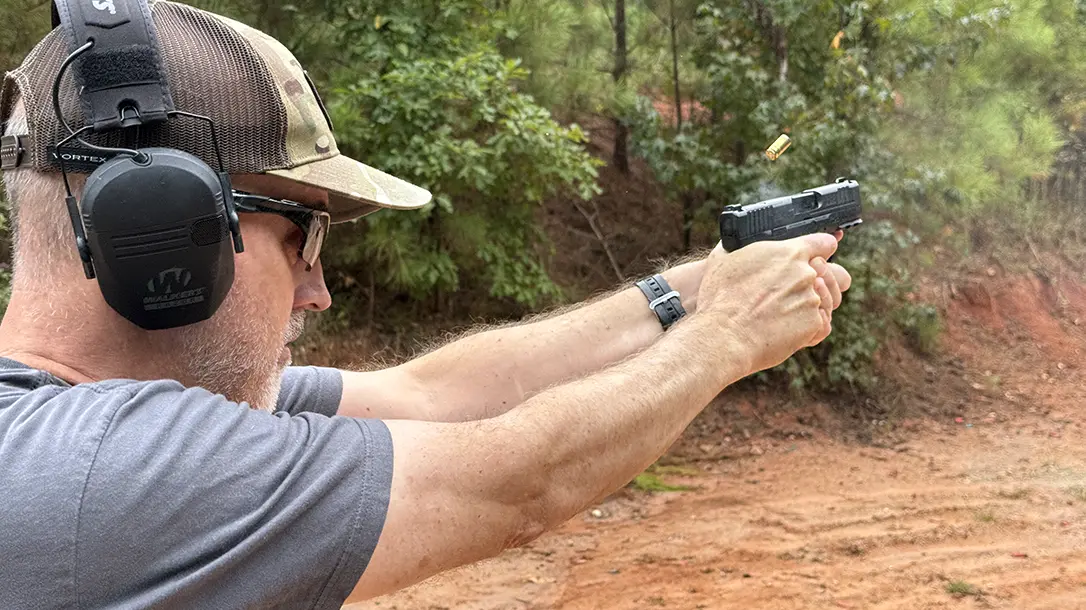“I may be late to the prom, but I show up with the prettiest girl!” That is the way one HK-USA employee described the new CC9. The story of the new CC9 pistol is one of challenges, frustration, victories, and validation. HK-USA is located in Columbus, Georgia and is a mere 10-minute drive from my home. This proximity has given a unique insight into the company and what it took to bring the CC9 to market. For over five years, I was fortunate to observe the process. I would like to thank the HK-USA team for providing access that has allowed me to see behind the curtain.
HK CC9 – Designed & Built in America
The story starts when, in 2018, I stopped by the plant to visit with Bill Dermody, the Marketing Director for HK-USA. With a sly smile, he asked me if I wanted to see something new. Of course I did. He then stepped out of the room and returned with two mockups of a proposed single-stack, micro-compact 9mm pistol. The pistol was designed by HK employees, in Columbus, and the plan was to manufacture it here. I was able to take a couple of photos of the guns, something I am glad I did.
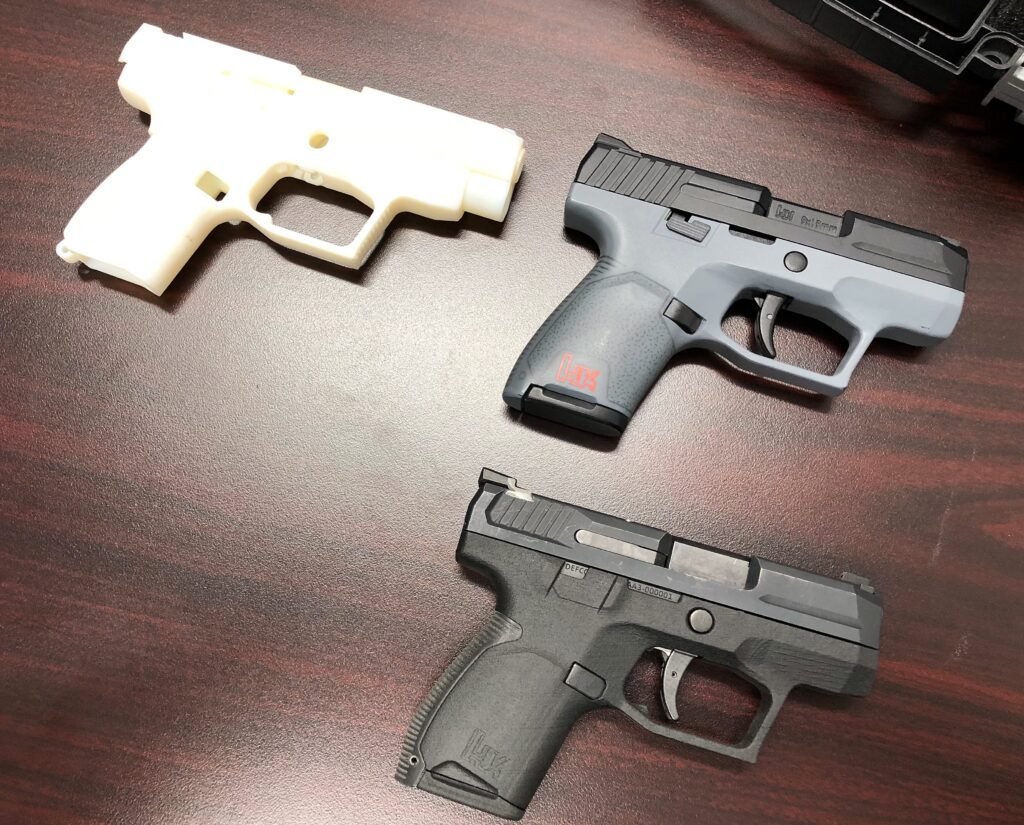
Advertisement — Continue Reading Below
This project would be a significant departure for HK. Previously, every commercial HK was a byproduct of a government or military program developed by HK Obendorf. The CC9 was to be designed for the U.S. concealed carry market. The subject matter experts were in America, not Germany.
The process faced a multitude of obstacles. There were days when the new gun hung in a very precarious balance. That was never truer than in early 2018, when SIG introduced the P365. Having a 10+1/12+1 capacity in a micro-compact platform shook the industry. To be relevant, HK had to go back to the drawing board. Turning a ship mid-course is not easy and convincing the German family that the American market was ready for a small HK pistol was not an easy mountain to climb.
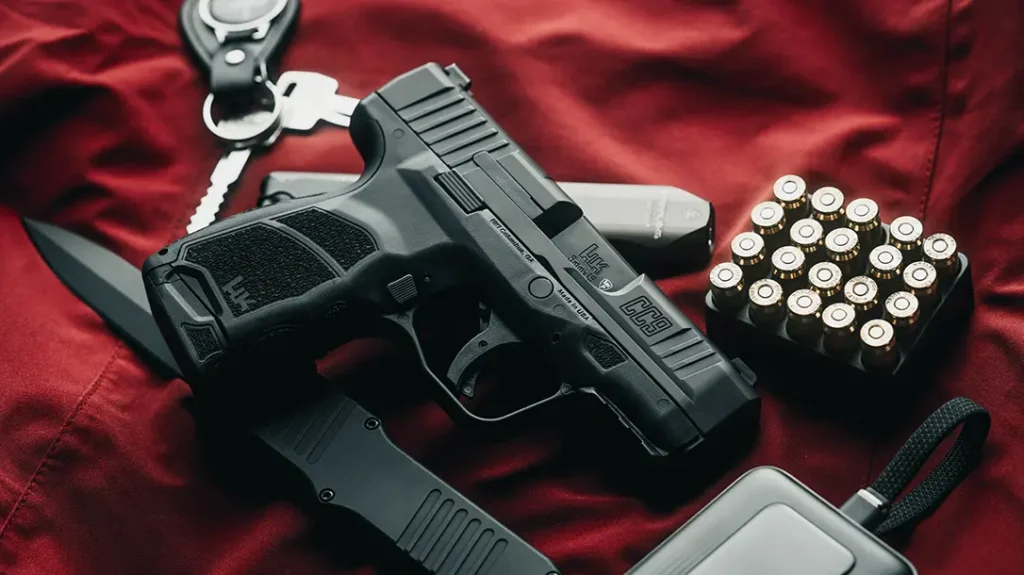
Advertisement — Continue Reading Below
Pushing a Rope Uphill
This is a phrase I heard more than once when I would ask about the progress on the new pistol. The pistol underwent a number of design changes in order to compete with an ever crowded market. One of the challenges was the insistence, on both sides of the ocean, that the new gun meet all the HK standards for a military-grade service pistol! That is something that had never been done before.
By the end of the process, the CC9 project has consumed over 750,000 rounds of ammunition, to include 100,000 rounds of Federal’s 147-grain +P HST! With every design change, 10 or so guns were tested to 10,000 rounds. There were times when a change corrected one issue but resulted in another issue that had to be solved. Even a change to the texture of the frame required a 10,000-round validation. The new pistol had to be 100% HK, in terms of reliability and durability. The bar was set.
While HK-USA states that the CC9 was tested to NATO A/225 specifications, that is very misleading. The NATO test only requires the standard be met with 9mm 124-grain NATO ball ammunition. The CC9 also needed to be reliable with all of the commercial loads available to the American shooter. So, in reality, the CC9 meets a higher testing standard than the VP9 or the USP. That is even more impressive given that the CC9 is a micro compact.
Advertisement — Continue Reading Below
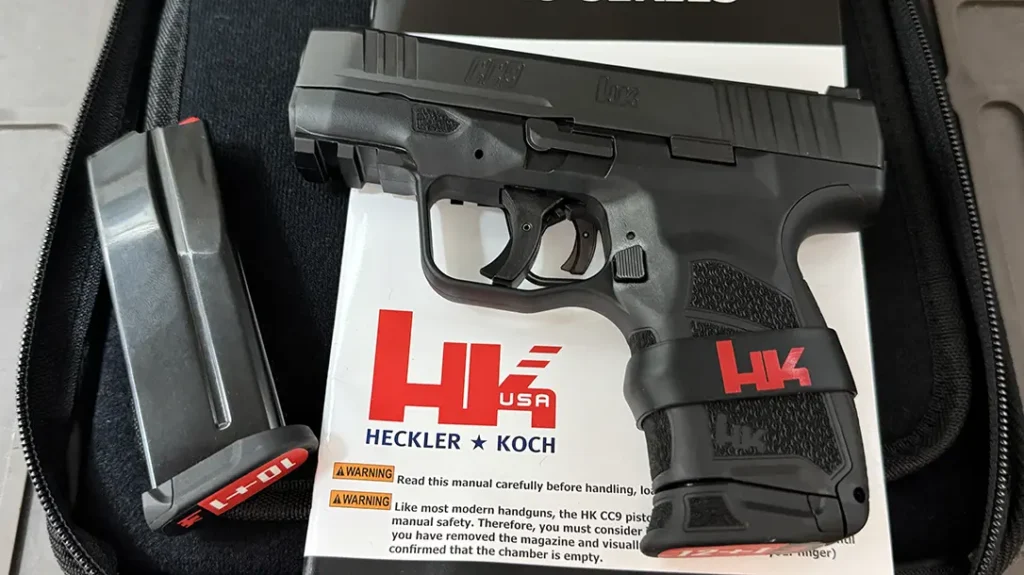
‘The Gun for the Worst Day of Your Life’
This is the phrase that Bill Dermody used to describe the CC9. It wasn’t designed to be the smallest in class, or have the greatest magazine capacity. It had to be small enough to be carried comfortably while being large enough to be shootable. Every shape, contour, and control revolved around meeting those two criteria.
Looks can be deceiving and, from the outside, the CC9 does not look remarkably different than any number of other pistols on the market. However, to quote Aristotle, the “whole is greater than the sum of the parts.” I had a lengthy conversation with Nathan Schueth, National Sales Manager for HK-USA, about what sets the CC9 apart from its competitors. He explained that the entire design process was governed by “form follows function” and HK’s relentless focus on a singular purpose. To make the most reliable, accurate, and concealable pistol on the market today.
Advertisement — Continue Reading Below
CC9 Specs & Features
According to the specification document that HK provided, the CC9 has a length of 6.03 inches, a height of 4.5 inches with the 10-round magazine, and a width of .99-inch. The barrel length is 3.32 inches and the weight, without a magazine is 18.4 ounces. As with other modern pistols, the CC9 utilizes a chassis design that will allow for product extensions. It is a pre-cocked striker system that has several distinctive safety systems. The first is a traditional trigger safety. The second is the firing pin drop safety that requires the trigger to be pulled to be disengaged. HK also designed safety into the takedown and reassembly process. The magazine must be removed before the take-down lever can be rotated. In addition, the pistol can’t be reassembled with a magazine in place.
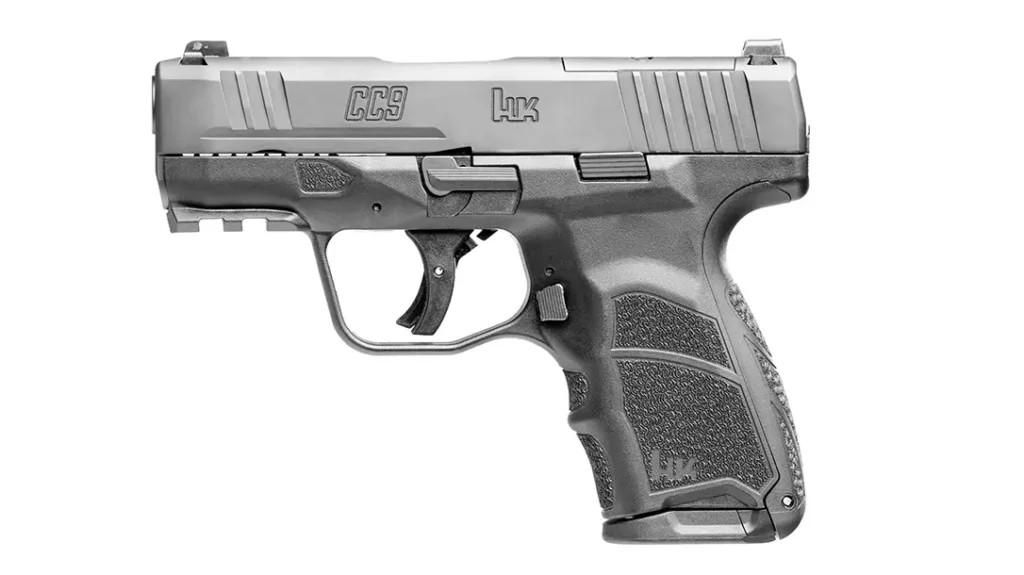
Advertisement — Continue Reading Below
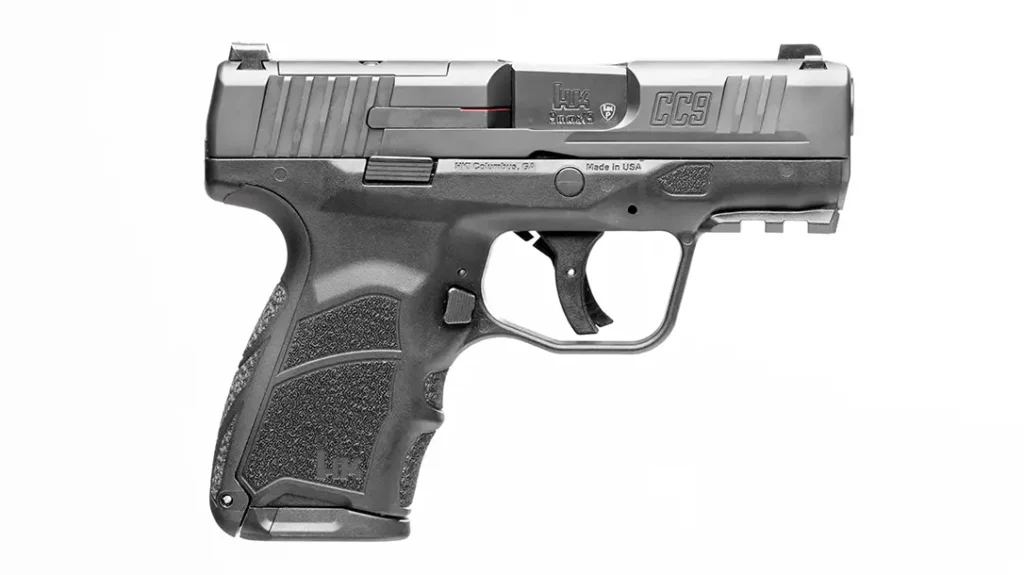
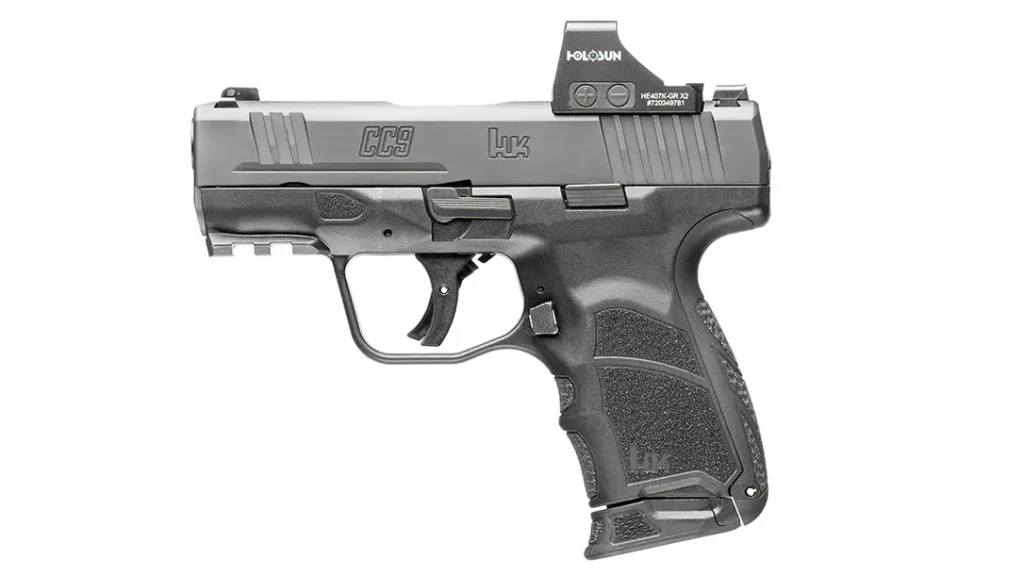
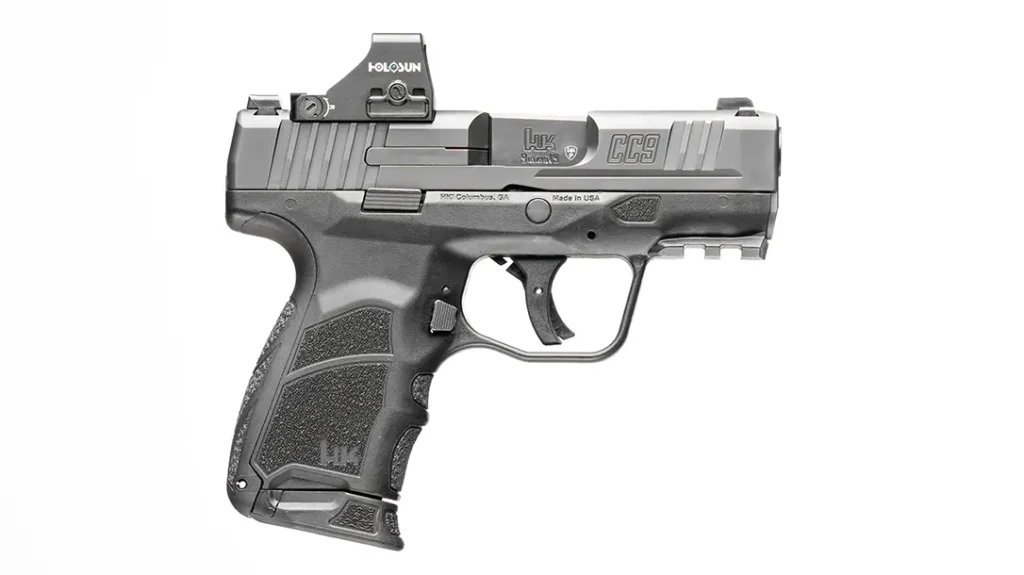
Advertisement — Continue Reading Below
Feature-Rich Platform
The CC9 is fully ambidextrous with dual controls for both the slide stop and the magazine release. The magazine release is not only fully ambidextrous, but is shielded by the frame, negating the need for a “fence” or “guard.” The slide stop, while extremely low profile, is contoured with a ledge to make it very functional. I had no issues when dropping the slide using the release.
The slide is contoured and beveled, making the pistol totally void of offending edges. The barrel of the CC9 is cold hammer forged from the same steel as the MP5’s barrel. It is probably the most durable barrel found in its class. The forward and rear cocking serrations are deep enough for a positive purchase without being abrasive. The extractor serves as a loaded chamber indicator and provides a visual and tactile feedback. The rear sight on the CC9 is all black with a square notch and serrations on the rear face. Thank you, HK, for not doing a 3-dot or a “U” notch! The front sight is Tritium inset surrounded by a luminescent green dot.
Moving to the frame, the radiused edges and subtle contours make the CC9 feel like a full-size pistol. The grip texture and shape of the panels went through multiple iterations to ensure the most ergonomic design possible. Reliefs provide channels to guide both the thumb and the trigger finger. The CC9 comes with two interchangeable backstraps. With the large backstrap installed, the length of pull is the same as a full-size VP9. The trigger, on our test pistol, broke cleanly at 5.5 pounds, and the reset was positive with minimal overtravel. The CC9 uses a captive, dual recoil spring that has a service life in excess of 10,000 rounds.
Advertisement — Continue Reading Below
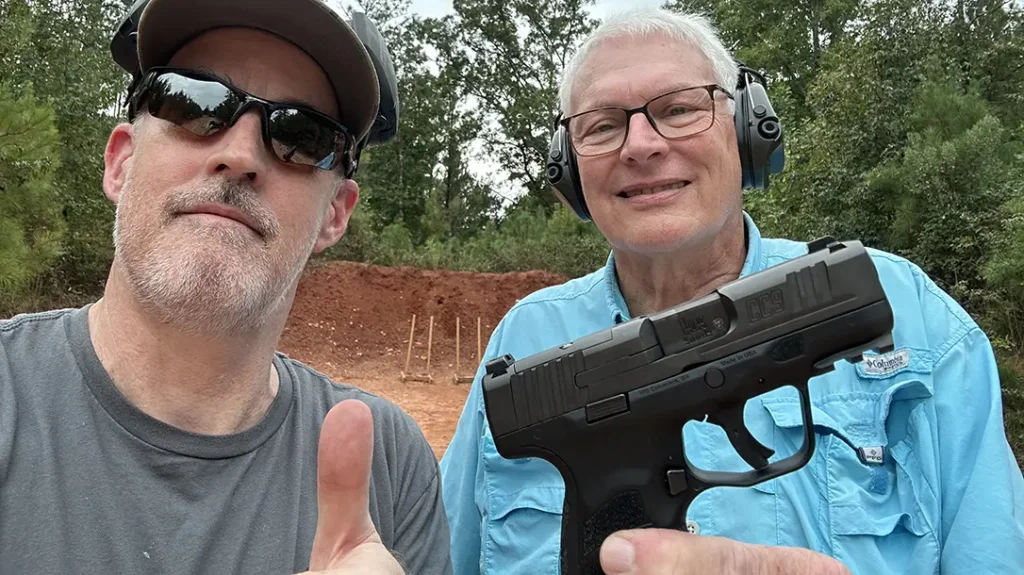
Optic-Ready Design
The CC9 is optic ready and will accommodate any RMSc footprint optic such as Holosun, Shield, and Vortex. The small accessory rail will accommodate certain compact weapon lights, giving the CC9 a low-light capability. HK has coordinated with a number of holster manufacturers to have products ready at the time of the launch. Other manufacturers will have models available in the near future.
The CC9 ships with a 10-round and a 12-round magazine. The 10-round fits flush while the 12-round magazine has a finger extension. Both are finished in a durable, high-gloss, black oxide coating. The magazine spring is specially designed to provide positive feeding and long life. As a result, when new, the magazines are difficult to load to capacity. I found this improved over the course of our testing. A high-visibility, red follower is standard and a feature I appreciate.
Advertisement — Continue Reading Below
‘Trust But Verify’
I received one of the first production CC9s approximately three weeks from the October 16 launch. It ships in a soft case that is embroidered with the HK logo. Having watched the process, and shot an early CC9, I had no doubt that the little gun was going to be HK tough. But, I applied the Ronald Reagan principle. I was going to put the CC9 through the highest round count I could accomplish (and afford), in a very short period of time.
So I gathered up 26 different 9mm loads that I had in the bunker. I not only ran a minimum of 20 rounds of each load through the little gun, but I also chronographed each load. The two lightest load were the Double Tap 80-grain TAC XP and Super Vel’s 90-grain +P JHP. These loads chronographed at 1,284 and 1,494 fps, respectively. I also tested three of the most popular personal defense loads. These are the Federal 124-grain HST, the Speer 124-grain +P Gold Dot, and the Hornady Critical Duty 124-grain +P. These loads averaged 1,090 fps, 1,188 fps, and 1,127 fps.
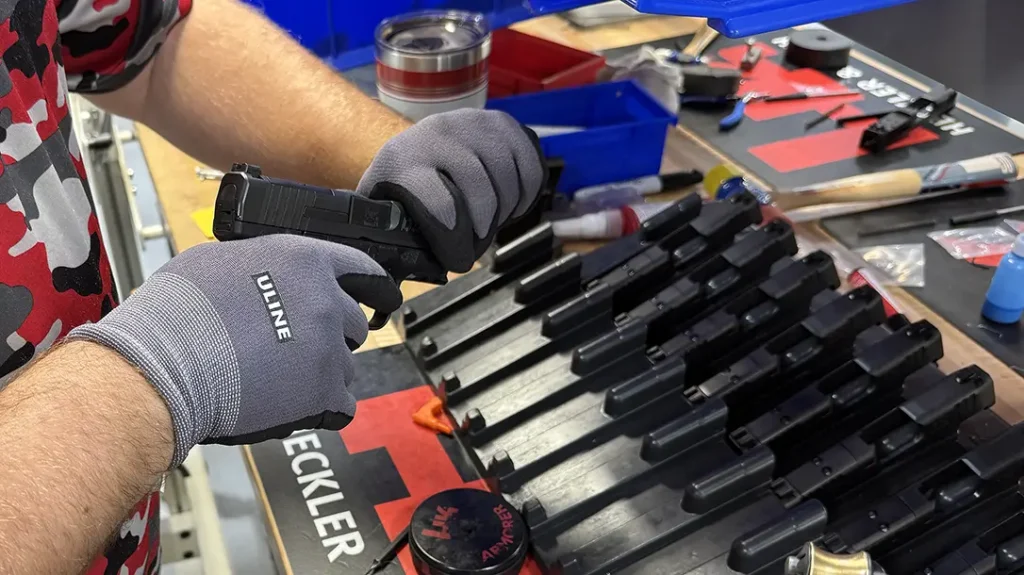
1,000 Rounds Fired!
However, I wasn’t finished; in the course of three range trips we put a documented 1,000 rounds through the CC9. Of those, 350 were Federal 115-grain ball with the rest being premium personal defense loads. I shot the pistol from various attitudes and with compromised grips. We also shot six magazine dumps, as fast as we could pull the trigger, and got the gun so hot is was uncomfortable to operate the slide.
During the entire process, I did not clean or lubricate the gun. I wanted to see just how much abuse it could take. It fouled and got extremely dirty, but the CC9 never failed or experienced any issues! Not one! Of the 1,000 rounds, I personally account for around 800 rounds. From an accuracy standpoint, the little gun certainly can outshoot me, but I was able to print several sub 1-inch groups at 10 yards. Ringing steel at 45 yards became monotonous.
HK CC9 – Notable Observations
Running 800 rounds through the CC9, with one range session accounting for almost 400 rounds, has given me a real feel for the pistol. Here are some notable observations that stand out to me:
- Even in high-round count range sessions, I did not develop any hot spots on my hands or fingers. This is impressive given my experience with other polymer pistols.
- The sights are well designed for both fast/close shooting while being effective when taking longer shots. As this goes to press, I was able to mount a red dot optic. Stay tuned for the results in a future article.
- While I preferred the 12-round magazine with the extension, in most testing, I did not notice which magazine I had in the gun.
- The trigger has a firm wall with a consistent and predictable break. It also lacks the overtravel found in many other pistols. The reset was positive and, during testing, I never short-stroked the trigger.
- The ambidextrous magazine release worked well and provides a capability that may not be needed often, but when needed, could be critical.
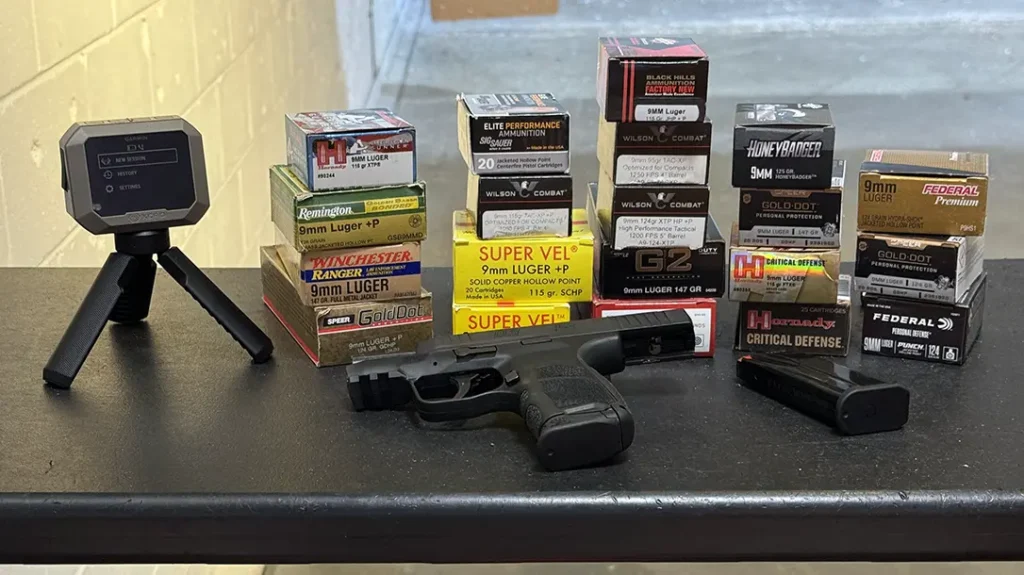
The End is Not the End
After 1,000 rounds I field stripped the CC9 and did a deep cleaning. An examination found very little surface wear on the barrel or frame rails. There was visible wear on the inside of the slide from the barrel, but it was finish wear. The finish, on the magazines, held up extremely well with only very small wear marks.
When HK-USA set out to build a personal defense pistol for the American consumer, some said it would never happen. The CC9 has proven them wrong. I look for the CC9 to raise the bar of what the market expects in a micro-compact pistol. It carries like a .380 and shoots almost as well as a full-size duty gun. Even prior to the release, several law enforcement agencies have requested samples for their officers.
Just prior to this going to press, I obtained a Holosun 507K red dot optic. For some time, I have resisted going the route of the red dot. The CC9 may be the catalyst I need to cross over. We will see.
The CC9 may not be the first high-capacity micro-compact pistol to the market, but it may well be the most tested, most durable, and most reliable! With production being in full swing, inventory should not be an issue. Look for a CC9 to be on the shelves of your local HK dealer in the very near future. I think you will be impressed.
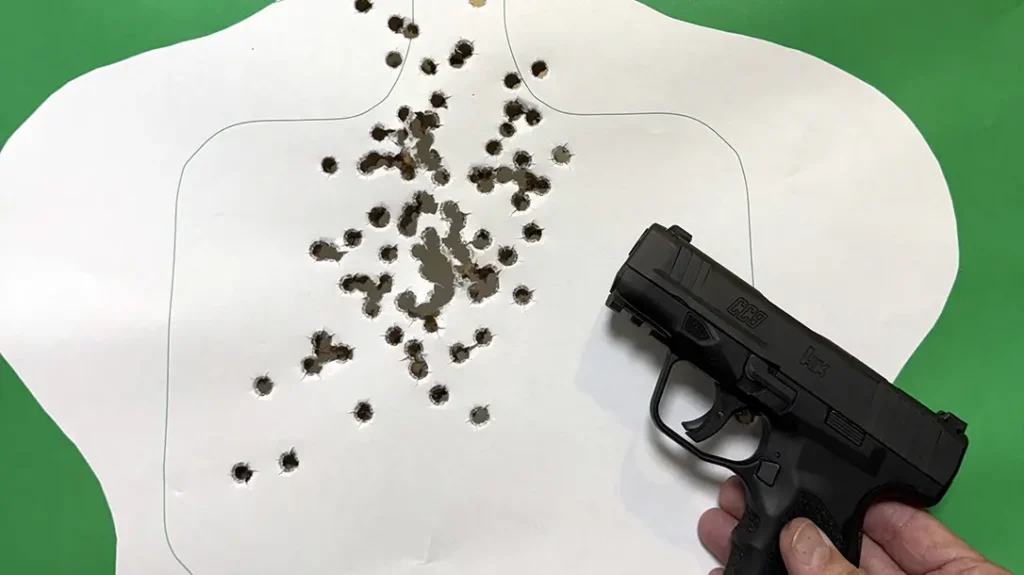
For additional information, visit hk-usa.com.
HK CC9 Specs
- Caliber: 9mm
- Overall Length: 6.03 inches
- Height: 4.5 inches
- Overall Weight (without magazine): 18.4 ounces
- Barrel: Cold Hammer Forged, 3.32 inches
- Operating System: Pre-Cocker Striker-Fired
- Rear Sight: Black Square Notch
- Front Sight: Green Luminescent/Tritium Insert
- Magazine Release/Slide Stop: Fully Ambidextrous
- Magazine Capacity: 10/12
- Optic-Ready Slide Cut: RMSc Footprint
- MSRP: $699
